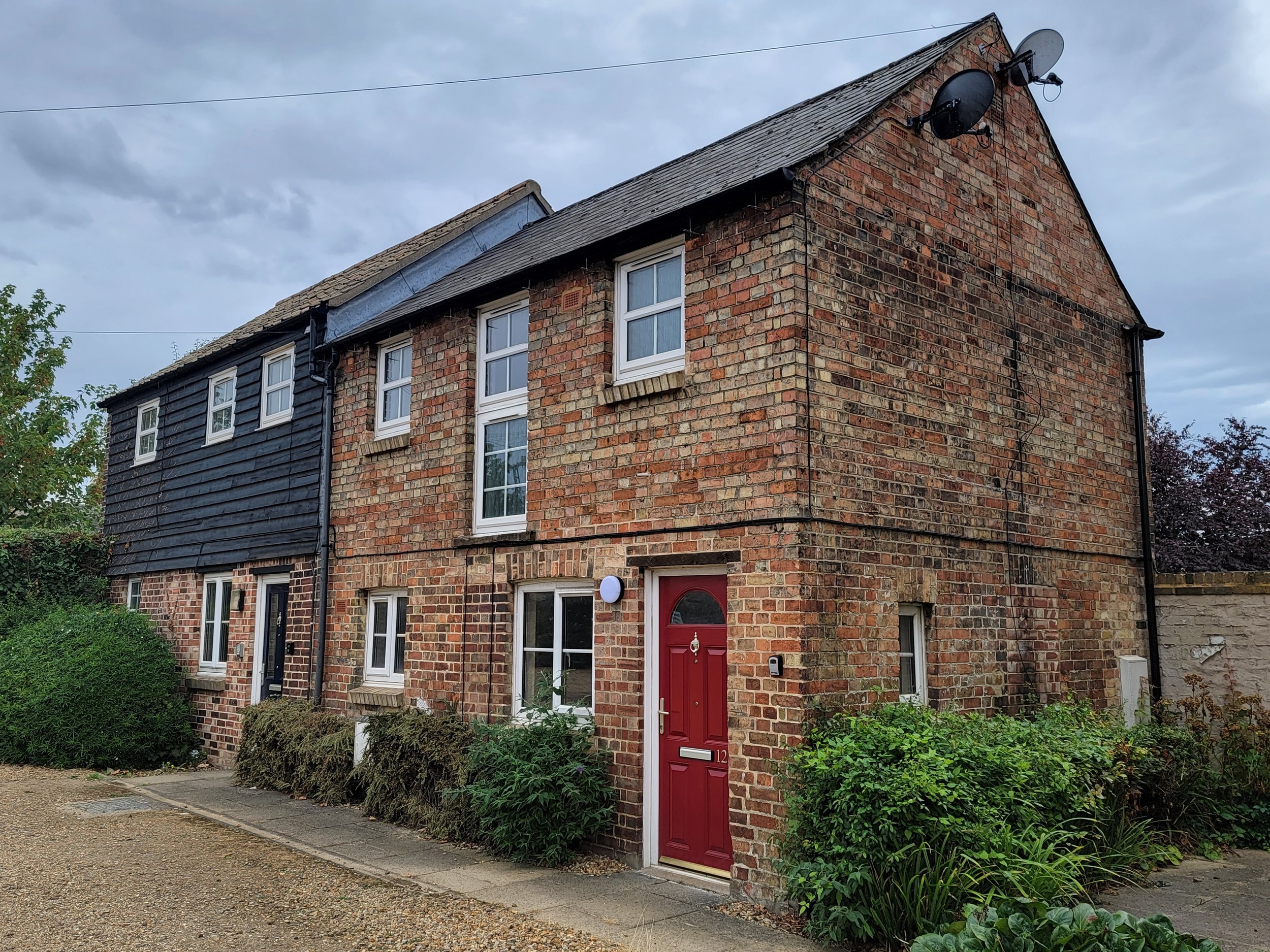My 4th great-grandfather William Beresford (1786-1855) was a bricklayer in Huntingdon, England. He had 5 children with his first wife Mary Anne Callow: Two boys who died in infancy (William and Henry) and three girls who survived to adulthood (Mary Ann, Sarah, and Rhoda). I don’t have any photographs of William, but I’ve been able to find quite a lot of information on him through online research, which I supplemented with an in-person visit to the Huntingdonshire Archives in September 2022.
William’s signature and seal from his will, signed in 1852
Bricklayer
William contributed to the construction and maintenance of numerous buildings in Huntingdon. The following is a list of projects for which William was paid or reimbursed, according to the Huntingdon Borough records (Corporation Accounts) held at the Huntingdonshire Archives:
1814: Bricklaying for Walden’s Charity School
1817: Mending floor at Guard House
1838: Bricklaying, fixing chimney at Town Hall
1841: Bricklaying at Station House
Huntingdon Town Hall, September 2022
Constable
Around 1830 William took on a side job: He was appointed parish constable for St John’s parish, Huntingdon. This was basically police duty for the northern end of town and was not a full-time position, but it may have been quite time-consuming on occasion. For example, in the summer of 1837, after Queen Victoria ascended to the throne, William received £2.4.0 for “constable expenses re: proclamation of the Queen” (Huntingdon Borough Records, Corporation Accounts). I’m very curious what these duties entailed, but the records do not go into any details.
In 1833, William helped catch a thief named William Douse, aged 24, who was wanted for burglary and for previously escaping from the county gaol (spelling variant of jail). William Beresford’s court testimony on his pursuit and capture of Douse appeared in the local paper. Douse was found guilty and initially sentenced to death but was later transported as a convict to Australia.
William Beresford’s witness testimony reported in the 16 March 1833 issue of the Huntingdon, Bedford, and Peterborough Gazette
As parish constable William was also in charge of quartering troops. He is referred to in Huntingdon Borough Records as “billet master” and in 1841 he received £2 as “½ yrs salary for billeting soldiers.” Based on the Third Amendment of the U.S. Constitution, I’m going to assume this wasn’t an enjoyable task, but at least he received some compensation.
Landlord
In later years William is referred to as a “proprietor of houses” (i.e., landlord) and “yeoman” (land owner) of Huntingdon. His will, written in 1852, mentions five freehold properties in the area of Priory Lane and St Germain Street and four freehold properties in St Mary’s Lane, all occupied by renters. He also refers to a leasehold property in the North End as his own dwelling.
I really wanted to figure out the exact location of William’s house and see if the building is still standing, but I didn’t get very far without a proper address. In his 1841 and 1851 Census records, his location was simply recorded as “The North End.” I walked around the area and looked at a few houses that might have been his.
One of many buildings on Huntingdon’s “North End”
Linens ‘n Things
William died at age 69 of a stroke (death record obtained from the General Register Office, 1855 D Quarter in Huntingdon, Volume 03B, page 153). The Huntingdonshire Archives holds the inventory of his estate, which I have transcribed, word for word, as follows:
Inventory and valuation of household furniture and effects belonging to the late Mr. Wm. Beresford of Huntingdon taken 21 December 1855.
Seven pairs of sheets
Eight pairs pillow cases
Eighteen towels
Six tablecloths
Two counterpanes
Two silver tablespoons
Twelve teaspoons
Two plated sugar bowls
Wainscot bureau
Ditto dining table
Ditto dressing table
Oval mahogany table
Two elbow chairs
Three chairs
Piece of carpet and rug
Pair window curtains
Two tea trays and waiter
Wheel barometer
Chimney glass
Two pictures and roll blind
Three table cloths
Fender and fire irons
Eight beakers and one decanter
Twelve wine glasses
Two pitchers and crockery ware
Tin broiler etc.
Set of tea china
Six elm chairs
One elbow ditto
Thirty-hour clock
Small round table
Round deal table
Square ditto
Tea tray and waiter
Fender and shovel
Five [can’t decipher] and ten plates
Flat iron and candlestick
Three saucepans etc.
Sundry courseware
Painted double chest of drawers
Four post bedstead and furniture
Mattress
Feather bed bolster and two pillows
Four blankets and quilt
Night conveniency
Mahogany chest of drawers
Three painted chairs
Five pieces carpet and rug
Dressing table and glass
Baton stand
Oak chest
Window curtain and blind
Four post bedstead and curtains
Mattress
Feather bed bolster and two pillows
Four blankets and quilt
Three chairs
Piece of carpet
Window curtain and blind
Oak chest of drawers
Dressing glass
Stair carpet
Large family Bible
Wearing apparel
All the above effects are valued at the sum of twenty-nine pounds fifteen shillings and six pence (£29.15.6) by me George Morris Fox, Licensed appraiser, Huntingdon
A leasehold brick and slated dwelling house situate at the North End of the Borough of Huntingdon thirty-eight years unexpired [i.e., built in 1817] at a ground rent of one pound ten shillings per annum valued at fifty pounds (£50.00) by me George Morris Fox, Licensed appraiser, Huntingdon
It sounds as though William Beresford lived comfortably, in a house with at least two bedrooms, some nice furniture, and plenty of linens. I would love to have seen his decanter, the clock, the wheel barometer, and everything else listed! I have no clue what happened to the family Bible. Maybe it has sadly disintegrated by this point or ended up in a charity/resale shop. But I enjoyed reading the inventory of his household, picturing how the interior might have looked, and gaining more insights into this ancestor.








